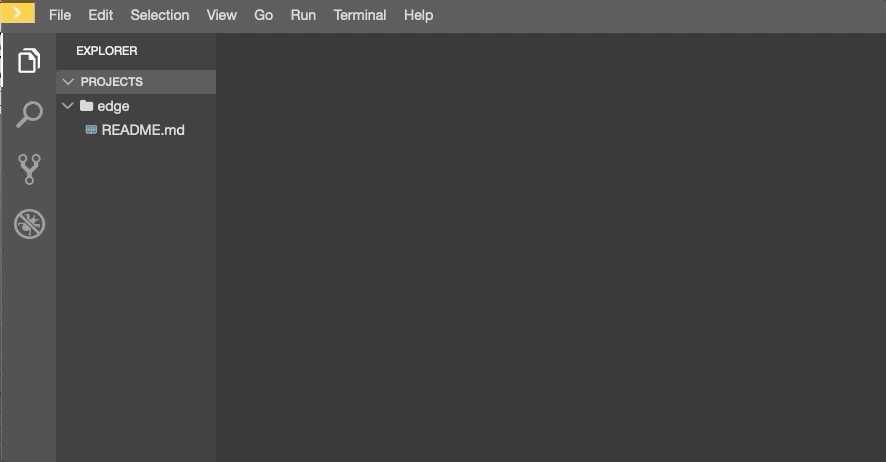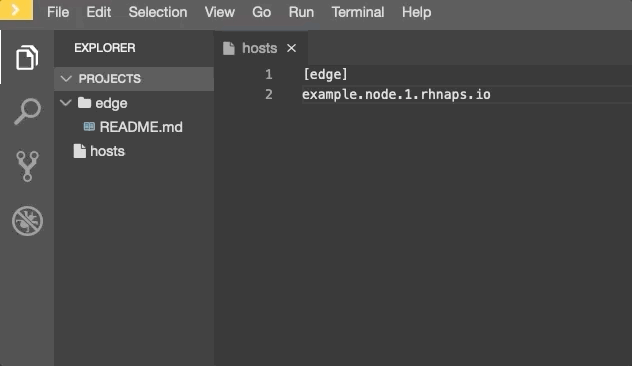
Exercise Description
For our first exercise, we are going to run some ad hoc commands to help you get a feel for how Red Hat Ansible Automation works. Ansible ad hoc commands enable you to perform repeatable tasks on local or remote nodes, without having to write a playbook. They are very useful when you simply need to do one or two tasks quickly and often, to many remote nodes.
Managing remote hosts
First, in order to manage remote systems - we need to set up our dependencies:
Define your inventory. Inventories are crucial to Ansible, as they define remote machines on which you will run commands or your playbook(s). Use the Code Ready Workspaces editor (Eclipse Che) to create a file called hosts by selecting [File] → [New File] → hosts (no .txt extention) file in /projects; then, click [Ok]

| The workshopname, in the example below, will be provided to you by your instructor. The # should be replaced by your student number. |
For example, a recent workshop student used: example.edge.0.redhatgov.io
Put the following content into the file:
[edge] example.edge.0.redhatgov.io
When complete, select "[File] → [Save]" to write out the content.

Step 1: Test the edge host response
Let’s start with something basic - pinging a host. The ping module tests the responsiveness of our edge host from the Code Ready Workspaces Terminal.
ansible edge --module-name pingStep 2: Run a Linux command
Now let’s see how we can run a Linux command and format the output, using the command module.
ansible edge --module-name command --args "uname -m" --one-lineStep 3: Review the setup module
Take a look at your edge node’s configuration. The setup module displays Ansible facts (and a lot of them) about an endpoint.
ansible edge --module-name setup| Like many Linux commands, ansible allows for long-form and short-form command-line arguments. For example: |
ansible edge --module-name command --args "uname -m" --one-line --becomeThe command above is the same as running the command below:
ansible edge -m command -a "uname -m" -o -bWe are going to be using the short-form options, going forward.
Step 4: Install a package on the edge.
For this example, we will use the 'skopeo' package; which, provides a way inspect, copy, and sync (plus more) containers repositories.
Now, let’s install 'skopeo', using the Ansible package module.
ansible edge -m package -a "name=skopeo state=present" -bWorkshop Details
| Domain |

|
|
| Workshop | ||
| Student ID |